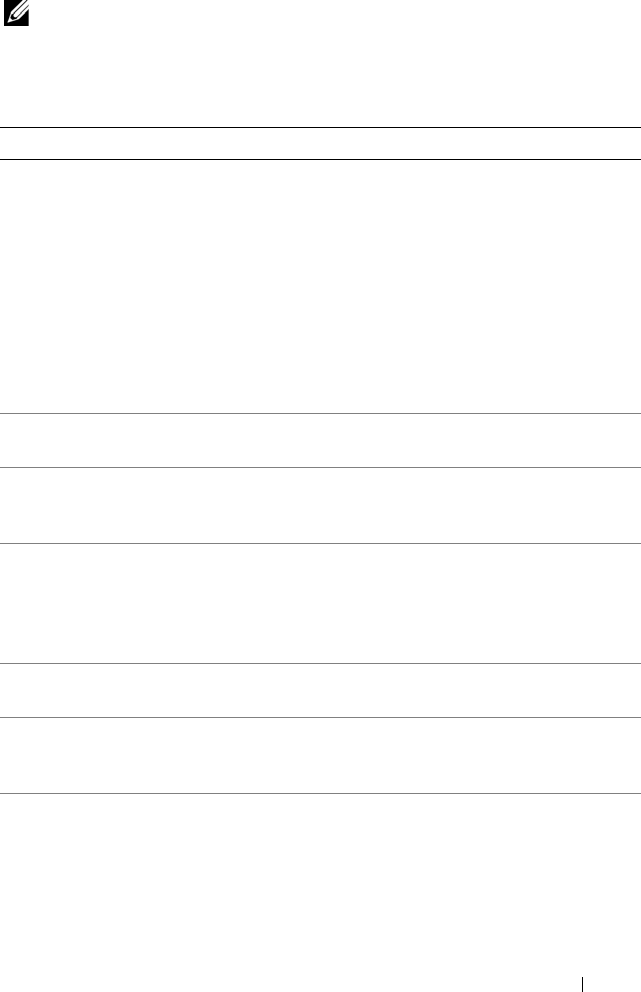Storage System Hardware Owner's Manual
Table Of Contents
- Hardware Owner’s Manual
- About Your System
- Using the System Setup Program
- Installing System Components
- Recommended Tools
- Inside the System
- Front Bezel
- Opening and Closing the System
- Hard Drives
- Replacing a Hard-Drive Carrier
- Power Supplies
- System Fans
- Cooling Shroud
- Fan Brackets
- Cable Routing
- SAS Controller Daughter Card
- Configuring the Boot Device
- Expansion Cards
- Expansion-Card Cage
- DRAC Card and Cables
- Optical Drive and Cable
- System Memory
- Activating the Integrated NIC TOE
- Processors
- System Battery
- Expansion-Card Riser Boards
- Sideplane Board
- SAS Backplane Board
- Control Panel Assembly (Service-only Procedure)
- System Board (Service-only Procedure)
- Troubleshooting Your System
- Safety First-For You and Your System
- Start-Up Routine
- Checking the Equipment
- Troubleshooting Basic I/O Functions
- Troubleshooting a NIC
- Troubleshooting a Wet System
- Troubleshooting a Damaged System
- Troubleshooting the System Battery
- Troubleshooting Power Supplies
- Troubleshooting System Cooling Problems
- Troubleshooting System Memory
- Troubleshooting an Optical Drive
- Troubleshooting an External SCSI Tape Drive
- Troubleshooting a Hard Drive
- Troubleshooting a SAS Controller Daughter Card
- Troubleshooting Expansion Cards
- Troubleshooting the Microprocessors
- Running the System Diagnostics
- Jumpers and Connectors
- Getting Help
- Glossary
- Index

About Your System 21
NOTE: If your system fails to boot, press the System ID button for at least five
seconds until an error code appears on the LCD. Record the code, then see "Getting
Help" on page 167.
Table 1-6. LCD Status Messages
Code Text Causes Corrective Actions
N/A SYSTEM NAME
A 62-character string that
can be defined by the user in
the System Setup program.
The SYSTEM NAME
displays under the
following conditions:
• The system is powered on.
• The power is off and
active POST errors are
displayed.
This message is for
information only.
You can change the system
ID and name in the
System Setup program.
See "Using the System
Setup Program" on
page 45.
E1000 FAILSAFE,
Call Support
See "Getting Help" on
page 167.
E1114 Temp Ambient Ambient system
temperature is out of
acceptable range.
See "Troubleshooting
System Cooling Problems"
on page 140.
E1116 Temp Memory Memory has exceeded
acceptable temperature
and has been disabled to
prevent damage to the
components.
See "Troubleshooting
System Cooling Problems"
on page 140.
E12
nn xx
PwrGd Specified voltage regulator
has failed.
See "Getting Help" on
page 167.
E1210 CMOS Batt CMOS battery is missing,
or the voltage is out of
acceptable range.
See "Troubleshooting the
System Battery" on
page 138.
E1229 CPU # VCORE Processor # VCORE
voltage regulator has
failed.
See "Getting Help" on
page 167.
Book.book Page 21 Monday, September 14, 2009 12:57 PM










